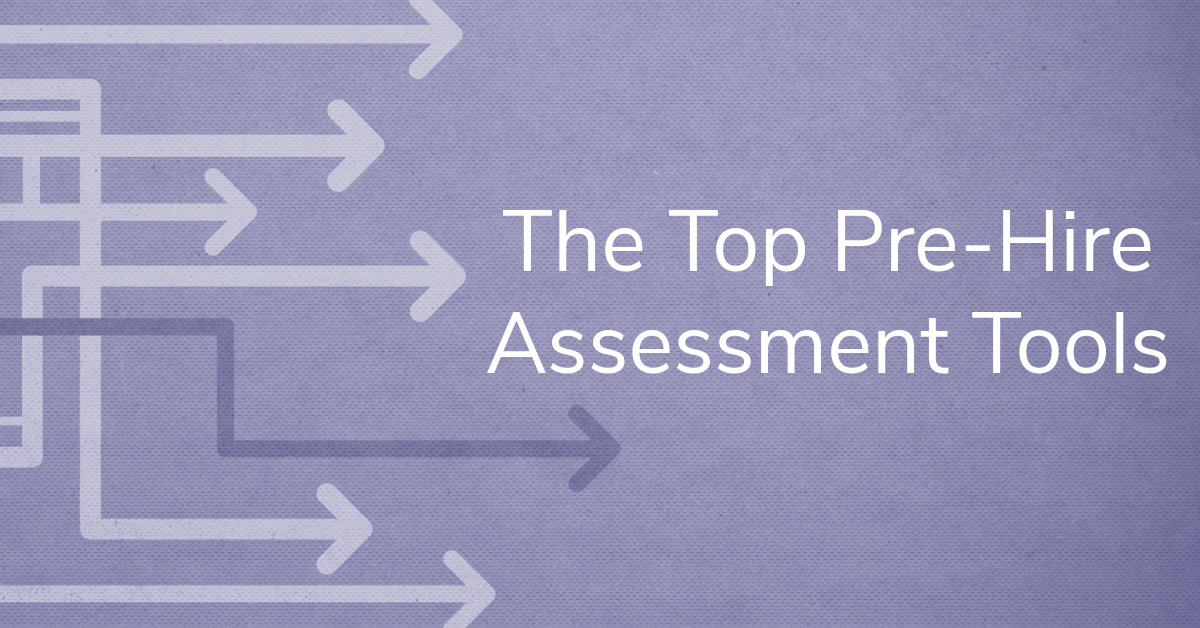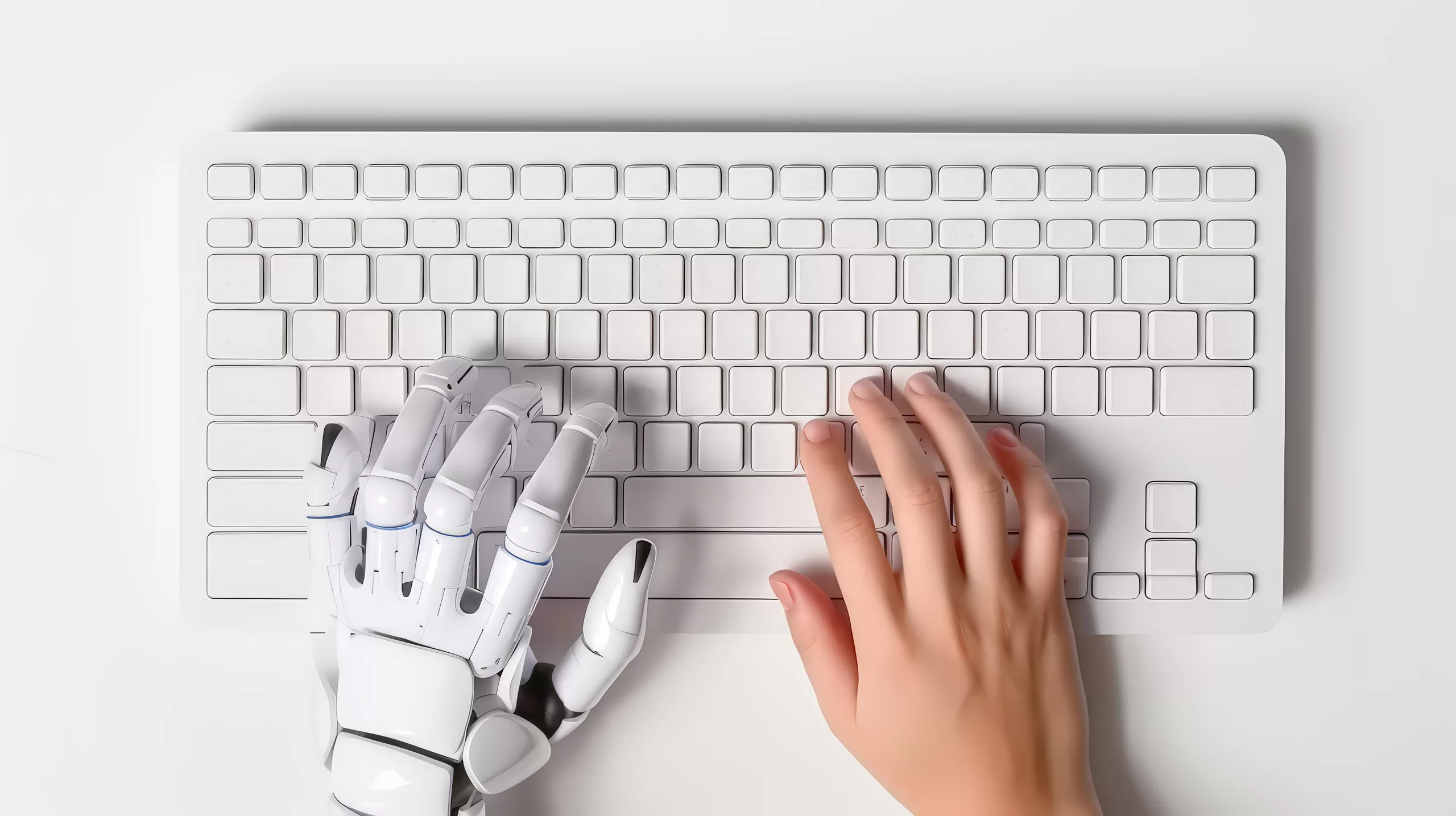Despite decades of innovation and digital transformation, the hiring process remains stubbornly inefficient. As a result, resumes pile up, great candidates slip through the cracks, and hiring timelines stretch longer than they should. However, AI and the future of hiring are starting to change that story. It’s helping organizations uncover insights, simplify tasks, and make better use of their time and resources.
Today, 38% of HR leaders have already implemented or are exploring AI recruitment tools to enhance their hiring processes (Gartner). AI isn’t about replacing human judgment—it’s about boosting human expertise and ensuring hiring teams can focus on building relationships and making confident decisions.
In this blog, we’ll explore how AI and the future of hiring are fundamentally transforming recruitment, from improving candidate screening and optimizing hiring funnels to empowering recruiters and preparing teams for the future.
Table of contents
The Evolution of AI and the Future of Hiring
Recruitment has always been a balancing act—matching the right people with the right roles, often under intense time pressure. Over the years, technology has played a role in simplifying certain tasks. Nevertheless, meaningful transformation remained elusive for much of the early digital era.
The Early 2000s: Basic Automation
In the early 2000s, AI’s first appearance in recruitment came in the form of AI Recruitment Tools focused on resume screening and interview scheduling, relying heavily on keyword-matching algorithms. While they saved time and reduced administrative workloads, their capabilities were limited. They could process large volumes of applications but rarely offered insights beyond surface-level matches.
The 2010s: The Rise of Machine Learning
By the 2010s, the adoption of machine learning algorithms marked a turning point. Instead of simply scanning resumes, AI began to analyze historical hiring data to identify patterns. Recruiters gained access to data-driven hiring insights, moving AI from being a time-saving tool to a strategic advisor.
Today: An Integrated Ecosystem
In the 2020s, AI and the future of hiring have become an integrated force across the entire hiring ecosystem. Modern platforms seamlessly connect with Applicant Tracking Systems (ATS) and Human Resource Management Systems (HRMS), providing a centralized view of candidate pipelines. These tools don’t just automate—they continuously learn, adapt, and refine hiring strategies based on real-time data.
The Strategic Role of AI in Hiring
AI’s role has evolved from being a task assistant to a strategic enabler. It’s helping hiring teams optimize hiring funnels, anticipate recruitment challenges, and plan workforce strategies with greater confidence.
What This Means for Recruiters: Today’s AI isn’t just about processing data—it’s about transforming data into actionable insights that guide smarter hiring decisions, reduce inefficiencies, and ensure better long-term outcomes.
Key Areas Where AI is Making an Impact
AI isn’t just transforming one aspect of recruitment—it’s reshaping the entire hiring journey. From identifying the right candidates faster to maximize resources, AI is helping organizations address persistent hiring challenges with precision and scale.
Predictive Hiring Analytics
AI-powered predictive analytics have become a critical part of smarter hiring strategies. By analyzing historical hiring data and assessing candidate attributes, AI tools can uncover patterns that help predict a candidate’s likelihood of success.
For example, an AI system might identify key traits—such as adaptability, problem-solving ability, or leadership potential—as strong indicators of long-term success.
What This Means for Recruiters: Hiring teams can make data-backed decisions that align candidates’ strengths with business needs, ultimately improving retention and performance outcomes.
Optimizing Hiring Funnels With AI
Every hiring process follows a funnel—from sourcing and application to assessment, interviews, and final offers. AI tools can monitor each stage, identify friction points, and suggest targeted improvements.
What This Means for Recruiters: With AI pinpointing inefficiencies in real time, recruiters can enhance the candidate experience, reduce drop-off rates, and accelerate the overall hiring timeline.
Smarter Resource Allocation with AI
Recruitment teams often operate with limited time, budgets, and personnel. AI-powered systems can optimize these resources by analyzing past recruitment campaigns and real-time performance data.
What This Means for Recruiters: Recruiters can prioritize high-impact activities, such as candidate engagement and relationship-building, instead of getting bogged down by administrative tasks.
Enhancing Diversity and Inclusion
Bias in hiring remains one of the most challenging issues in talent acquisition. AI tools offer solutions by standardizing evaluation criteria, anonymizing candidate data, and focusing on objective metrics.
That said, ongoing Human-in-the-Loop (HITL) oversight is essential to consistently monitor, audit, and refine AI systems.
What This Means for Recruiters: With the right oversight, AI can contribute to fairer, more inclusive hiring practices that align with diversity goals.
The Changing Role of Recruiters in an AI-Driven World
AI and the future of hiring does not include replacing recruiters—it’s about empowering them. By automating repetitive tasks and simplifying administrative workflows, AI allows recruiters to focus on building connections, understanding people, and making informed hiring decisions.
From Administrators to Talent Strategists
Recruiters are now:
- Analyzing hiring trends to anticipate workforce needs.
- Using AI-driven analytics to refine job descriptions.
- Focusing on candidate experience to build meaningful interactions.
Blending Human Skills with AI Insights
While AI excels at analyzing data, it can’t replicate human intuition, empathy, and cultural awareness. Recruiters now blend AI insights with their expertise to:
- Evaluate cultural fit alongside technical skills.
- Build trust and rapport with candidates.
What This Means for Recruiters: AI and the future of hiring aren’t about replacing human recruiters—they’re about enhancing their capabilities. AI serves as a force multiplier, enabling recruiters to focus on strategic decisions and human connections.
Upskilling for the Future
The rise of AI and the future of hiring also calls for a shift in recruiters’ skill sets. Today’s hiring professionals need to:
- Interpret AI-driven analytics to guide decision-making.
- Integrate AI tools for hiring seamlessly into their workflows.
- Understand AI ethics to ensure hiring practices remain transparent and fair.
Organizations that invest in ongoing training and development for their recruitment teams will see the greatest return on their AI investments.
What This Means for Recruiters: AI isn’t a replacement—it’s an enabler. Recruiters who embrace AI and adapt their skills will not only stay relevant but become indispensable strategic partners in driving organizational growth.
Addressing Challenges and Ethical Considerations
Although AI has introduced significant improvements to recruitment, it is not without its challenges. For organizations to fully realize the benefits of AI, they must address key concerns around data privacy, algorithmic bias, and transparency. These aren’t just technical issues—they’re fundamental to building trust with candidates, hiring teams, and stakeholders.
Data Privacy and Security
AI tools rely on vast amounts of candidate data—resumes, interview recordings, assessment results, and personal details. This creates a significant responsibility for organizations to handle, store, and process data securely.
Failure to safeguard candidate data can result in legal consequences, brand reputation damage, and loss of trust. Compliance with regulations like GDPR and similar regional data protection laws isn’t optional—it’s a necessity.
Best Practices for Data Privacy:
- Ensure end-to-end encryption for candidate data.
- Regularly audit AI systems for recruitment for compliance with privacy standards.
- Limit data access to authorized personnel only.
Algorithmic Bias and Fairness
AI systems are only as unbiased as the data they’re trained on. Historical hiring data often reflects societal or organizational biases—whether related to gender, ethnicity, education, or other factors.
If left unchecked, AI tools can unintentionally amplify these biases, leading to unfair or even discriminatory hiring practices.
Best Practices for Mitigating Bias:
- Regularly audit AI algorithms to identify and correct biases.
- Ensure Human-in-the-Loop (HITL) oversight in AI-driven hiring workflows.
- Use diverse training datasets to reduce historical biases in AI systems.
Transparency and Explainability
One of the biggest criticisms of AI tools is their black-box nature—the lack of transparency in how they reach conclusions. Recruiters, candidates, and hiring managers need to understand why certain candidates are recommended or rejected.
Without transparency, trust in AI tools erodes, and adoption becomes challenging.
Best Practices for Transparency:
- Choose explainable AI (XAI) systems that provide clear decision-making pathways.
- Communicate AI-driven hiring decisions in easy to understand terms to candidates and partners.
- Maintain audit trails for AI hiring recommendations.
Balancing Technology with Human Oversight
The challenges of privacy, bias, and transparency all point to one undeniable fact: AI cannot operate unchecked. Human oversight remains critical to providing fairness, accountability, and ethical decision-making.
Recruiters and HR leaders must approach AI tools for hiring as collaborators, not foolproof authorities. This means being prepared to intervene, question outcomes, and continually refine AI systems based on real-world performance.
What This Means for Recruiters: Responsible adoption of AI for hiring isn’t just about avoiding pitfalls—it’s about proactively building systems that are fair, transparent, and accountable. Companies that approach AI with care and supervision will not only reduce risks but also build stronger trust with candidates and partners.
What the Future Holds for AI in Hiring
The future of AI in hiring isn’t just about building better tools—it’s about creating a seamlessly integrated system where every hiring decision is supported by data. As AI continues to evolve, it’s set to redefine how organizations attract, evaluate, and retain talent, becoming an indispensable ally in long-term workforce planning.
AI-Powered Virtual Interviews
Virtual interview tools have already streamlined the hiring process, but future AI-powered platforms are set to deliver deeper insights beyond basic video calls and transcripts. These tools will analyze the tone of voice, word choice, and facial expressions in real time to provide a more comprehensive understanding of a candidate’s confidence, sincerity, and alignment with company culture.
For example, AI tools for hiring might detect patterns of hesitation in responses or highlight a candidate’s strengths in communication style. However, these capabilities require Human-in-the-Loop (HITL) oversight to ensure insights are interpreted accurately and free from unintended bias.
What This Means for Recruiters: Virtual interviews will evolve from a logistical convenience to a valuable source of critical insights, enabling recruiters to make more informed evaluations without losing the human element.
Future AI Development in Hiring Funnel Optimization
Hiring funnels—spanning sourcing, assessment, interviews, and onboarding—are often riddled with inefficiencies and drop-off points. AI will play a central role in dynamically identifying and resolving these bottlenecks in real-time.
For instance, if an AI system detects frequent candidate drop-offs during an assessment, it might adjust instructions or recommend a more concise test structure. Or if delays emerge in interview scheduling, AI can automate follow-ups and suggest alternate timelines.
Predictive analytics will also allow recruiters to forecast funnel performance before problems arise, enabling proactive adjustments to hiring resources, assessment, or communication cadences.
What This Means for Recruiters: AI-powered hiring funnels will become more agile and self-correcting, reducing drop-off rates, improving candidate engagement, and simplifying communication across every touchpoint.
AI and Resource Allocation: Smarter, Faster, Better Hiring Strategies
Recruitment teams often face tight budgets, time constraints, and shifting priorities. AI is set to transform resource allocation by providing real-time insights and dynamic adjustments across hiring campaigns.
For example:
- If AI analytics identify a recruitment channel delivering higher ROI, budgets can be automatically reallocated to optimize visibility.
- During high application periods, AI tools can balance recruiter workloads, ensuring no candidate is overlooked.
- Seasonal hiring trends can be analyzed to help teams plan and allocate resources more effectively.
This approach goes beyond cost efficiency—it ensures every dollar and hour spent delivers maximum value.
What This Means for Recruiters: With AI handling resource allocation, recruiters can focus on meaningful tasks like candidate engagement and relationship building instead of operational logistics.
End-to-End Integration Across HR Systems
The future of hiring isn’t about standalone tools—it’s about creating an interconnected HR ecosystem. AI will seamlessly integrate with Applicant Tracking Systems (ATS), Human Resource Management Systems (HRMS), and employee development platforms.
For example:
- Data from hiring processes can inform onboarding plans tailored to individual strengths.
- Performance analytics can guide future hiring decisions by identifying successful candidate profiles.
This integration will create a continuous feedback loop, enhancing decision-making across the employee lifecycle.
What This Means for Recruiters: Recruiters will gain a holistic view of talent management, enabling smarter, data-informed workforce planning.
Ethics and Governance Become Central
As AI takes on a larger role in hiring decisions, ethical governance becomes essential. Organizations will need to:
- Conduct regular audits to ensure AI fairness and transparency.
- Address algorithmic biases through Human-in-the-Loop (HITL) oversight.
- Stay compliant with evolving privacy regulations like GDPR.
Beyond mitigating risks, these measures will foster trust and accountability in recruitment processes.
What This Means for Recruiters: Ethical AI practices will become a core competency for HR professionals, requiring awareness, training, and vigilance.
Shifting Mindsets: From Tools to Strategy
The successful adoption of AI in recruitment requires more than just tools—it requires a strategic mindset. AI isn’t a replacement for recruiters; it’s an enabler that helps them make smarter, faster decisions while focusing on what humans do best: building relationships and assessing cultural fit.
For example:
- Organizations need to align AI adoption with broader business objectives.
- Ongoing AI training ensures HR teams stay confident in using these tools.
- Data privacy and transparency must remain top priorities.
What This Means for Recruiters: AI should be viewed as a strategic partner, not just a technical tool, enabling recruiters to focus on high-value activities.
Upskilling for an AI-Enhanced Future
As AI becomes embedded in hiring processes, HR professionals must develop new skills to effectively cooperate with these tools.
For example:
- Basic AI literacy training can help recruiters understand AI insights.
- Collaboration with data science teams can bridge knowledge gaps.
- Ethical awareness ensures responsible AI adoption.
What This Means for Recruiters: Upskilling in AI tools and analytics will become a necessary part of professional development for HR teams.
The Path Forward: AI + Human Expertise
The most successful organizations will integrate AI thoughtfully, balancing technology with human expertise.
For example:
- Keep human oversight in AI-driven decisions.
- Maintain ethical standards across implementations.
- Encourage continuous learning and adaptation.
What This Means for Organizations: Embracing AI isn’t about replacing human insight—it’s about amplifying it, creating scalable, equitable, and future-ready hiring strategies.
The Big Picture Takeaway
The future of AI in recruitment isn’t about smarter tools—it’s about smarter strategies. Companies that prioritize thoughtful AI integration, ethical governance, and ongoing skills development will set the standard for strategic, efficient, and human-centered hiring.
Accelerate and Improve Hiring with Wonderlic
Wonderlic’s AI-powered tools are built on decades of research and industry expertise, offering solutions that are scalable, transparent, and impactful.
Why Choose Wonderlic?
- Hire Faster: Reduce time-to-hire without sacrificing quality.
- Reduce Bias: Standardize candidate evaluations to promote fairness.
- Enhance Candidate Experience: Provide clear, meaningful feedback after assessments.
Wonderlic ensures that every hiring decision is backed by data, guided by expertise, and aligned with organizational goals.
CTA: See Wonderlic in Action – Get a Demo Today
FAQs
AI is transforming recruitment by automating repetitive tasks and analyzing large datasets. It can screen resumes, match candidates, schedule interviews, and provide predictive analytics, allowing recruiters to save time and focus on strategic decisions. By identifying patterns in successful hires, AI helps refine job descriptions and candidate profiles.
No, AI will not replace recruiters. While AI excels at data processing, predictive analytics, and workflow automation, it cannot replicate human judgment, emotional intelligence, or relationship-building skills.
AI can help reduce unconscious bias in hiring by standardizing evaluations based on objective criteria. However, if trained on biased datasets, AI can perpetuate those biases. Therefore, Human-in-the-Loop (HITL) oversight and ongoing auditing are crucial.
-AI-Powered Virtual Interviews: Real-time analysis of tone, expressions, and communication styles.
-Skills-Based Hiring: Moving beyond resumes to focus on core competencies and potential.
-Dynamic Hiring Funnels: Real-time adjustments to optimize each stage of the candidate journey.
-Smarter Resource Allocation: AI tools will dynamically adjust budgets and recruiter workloads based on live campaign data.
-End-to-End Integration: Seamless connectivity across Applicant Tracking Systems (ATS), HR Management Systems (HRMS), and workforce analytics tools.
To adopt ethical AI, organizations should ensure governance, transparency, and accountability. Regular audits for biases, Human-in-the-Loop (HITL) oversight, and transparent communication with stakeholders are essential. Compliance with data privacy regulations like GDPR builds trust and reduces risks.






